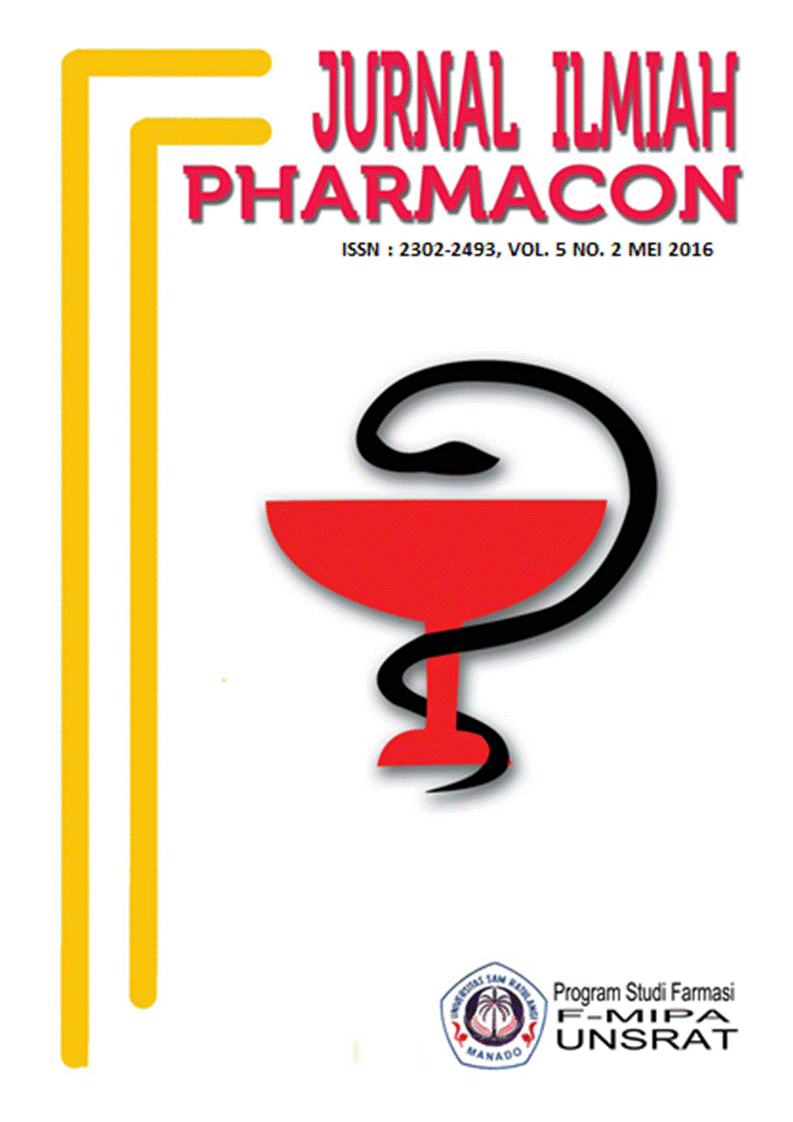ANALISIS SEKUENS Gen matK Sansevieria trifasciata var. Laurentii DAN var. Hahnii
DOI:
https://doi.org/10.35799/pha.5.2016.12175Abstract
ANALISIS SEKUENS Gen matK Sansevieria trifasciata var. Laurentii DAN var. Hahnii
Â
Riano Rembet1), Johanis J. Pelealu1), Beivy J. Kolondam1), Trina E. Tallei1*)
1)Jurusan Biologi FMIPA Universitas Sam Ratulangi
* trina_tallei@unsrat.ac.id
Â
ABSTRACT
Â
Sansevieria has many hybrids and horticultural varieties so that the classification of this plant in the genus is often difficult to do. In the Sansevieria genera, S. trifasciata is the most commercialized species. There are at least 20 cultivars of this species that have been sold around the world. Two varieties among S. trifasciata collected by ornamental plant collectors are var. Laurentii and var. Hahnii. Morphological characters of both plants are very distinct, so they may be considered as different species. Lack of information about the genetic variation in S. trifasciata encouraged this study. This study aimed to assess differences in matK gene sequences between S. trifasciata var. Laurentii and var. Hahnii, as well as to compare them with matK sequence of S. trifasciata obtained from GenBank. Total DNA was extracted from fresh leaves using innuPREP Plant DNA Kit (Analytik Jena) in accordance with the protocol provided. DNA obtained was used for the PCR process to obtain the matK gene fragment. Primer pairs used for amplification and gene sequencing were 3F-r and 1R-f. The results showed that there were no differences among matK sequences of S. trifasciata var. Laurentii, S. trifasciata var. Hahnii, and S. trifasciata obtained from GenBank. In conclusion, those plants are the same species.
Keywords: matK gene, hybrid, Sansevieria trifasciata var. Laurentii, Sansevieria trifasciata var. Hahnii, genetic variation, variety
ABSTRAK
Sansevieria memiliki banyak sekali hibrida dan varietas hortikultur sehingga klasifikasi tumbuhan ini di dalam genusnya seringkali sulit sekali dilakukan. Di dalam genus Sansevieria, S. trifasciata merupakan spesies yang paling dikomersilkan. Paling tidak terdapat 20 kultivar dari spesies ini yang telah dijual di seluruh dunia. Dua di antara varietas S. trifasciata yang banyak dikoleksi oleh para kolektor Sansevieria yaitu S. trifasciata var. Laurentii dan var. Hahnii. Karakter morfologi kedua tumbuhan ini sangat berbeda sehingga terdapat kemungkinan dianggap sebagai spesies yang berbeda. Kurangnya informasi mengenai variasi genetik pada S. triafsciata mendorong dilakukannya penelitian ini. Penelitian ini bertujuan untuk menganalisis sekuens gen matK S. trifasciata var. Laurentii dan S. trifasciata var. Hahnii, serta membandingkannya dengan S. trifasciata yang diperoleh dari GenBank. DNA total diekstraksi dari daun segar menggunakan innuPREP Plant DNA Kit (Analytik Jena) sesuai dengan protokol yang telah disediakan. DNA yang diperoleh digunakan untuk proses PCR untuk mendapatkan fragmen gen matK. Pasangan primer matK yang digunakan untuk amplifikasi dan sekuensing yaitu 3F-r dan 1R-f. Hasil penelitian menunjukkan bahwa tidak terdapat perbedaan sekuens matK antara S. trifasciata var. Laurentii dan S. trifasciata var. Hahnii, maupun dengan S. trifasciata yang ada di GenBank. Kesimpulan dari penelitian ini yaitu tumbuhan-tumbuhan ini merupakan spesies yang sama.
Â
Kata kunci: gen matK, hibrida, Sansevieria trifasciata var. Laurentii, Sansevieria trifasciata var. Hahnii, variasi genetik, varietas
Downloads
Published
How to Cite
Issue
Section
License
Authors who publish with this journal agree to the following terms:
- Authors retain copyright and grant the journal right of first publication with the work simultaneously licensed under a Creative Commons Attribution-NonCommercial 4.0 International License that allows others to share the work with an acknowledgement of the work's authorship and initial publication in this journal.
- Authors are permitted and encouraged to post their work online (e.g., in institutional repositories or on their website) prior to and during the submission process, as it can lead to productive exchanges, as well as earlier and greater citation of published work (See The Effect of Open Access)










